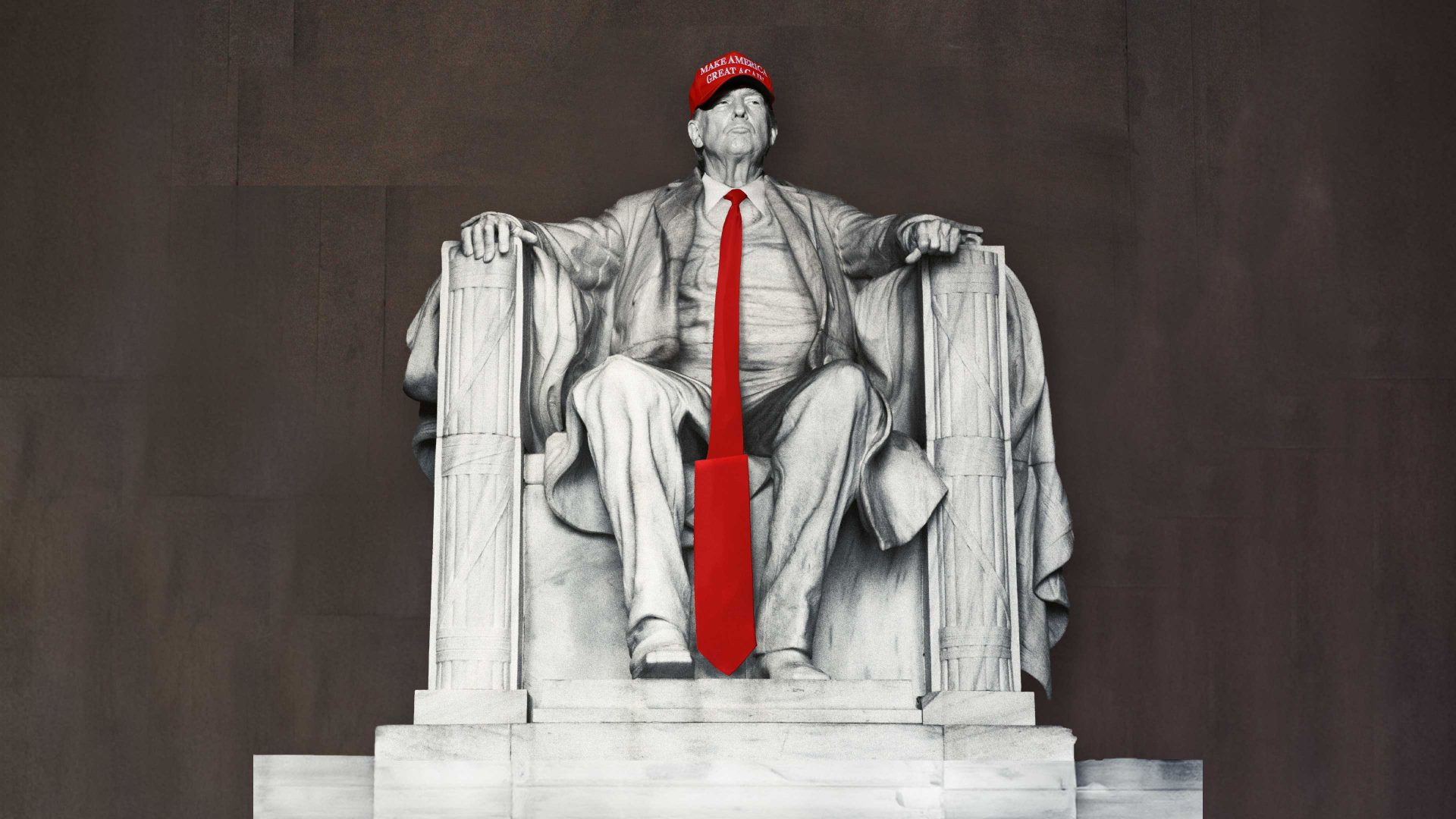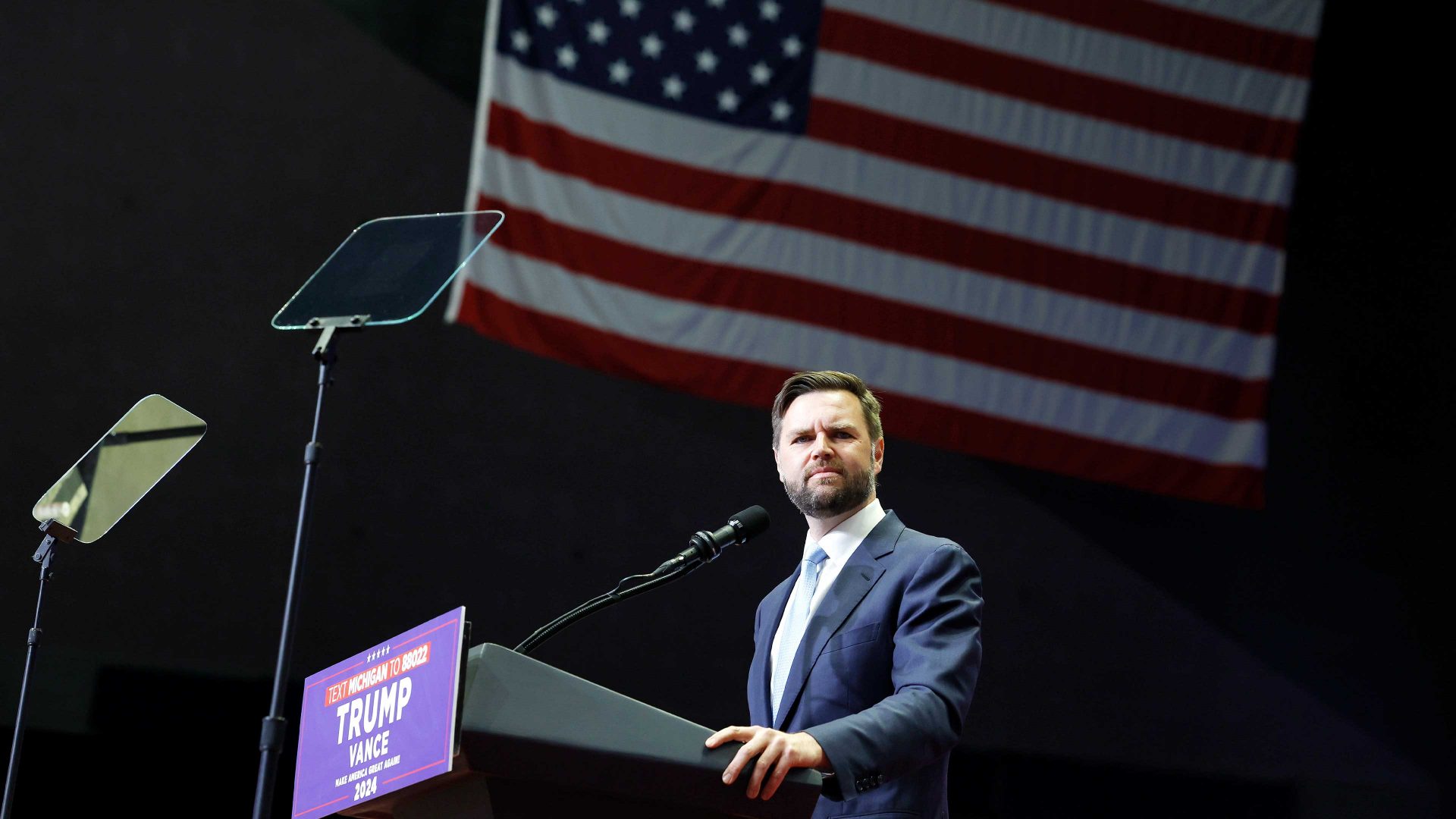Donald Trump hangs like a heavy lead weight over 2024. So far, the year has brought no shortage of things to celebrate, even if some of them are small wins.
Plenty of people are delighted to see the back of 14 years of Conservative government here in the UK. The people of France have managed to hold back the National Front and stop them from forming the government. Democrats in America are delighted that they have a new candidate in Kamala Harris.
But over all of these “wins” – especially the latter – is the prospect that we wake up on the morning of the first Wednesday in November and learn that Donald J Trump is set to become the 47th president of the United States. He looms in the temporal landscape like an iceberg that we just can’t work out whether or not we’re on course to hit.
Reassurance, such as it is, comes largely from the idea that we have, after all, had a Trump presidency before and we all got through it. We survived it once – how bad could a second term be? It is the kind of question we need to learn not to ask ourselves in 2024, because the answers aren’t reassuring.
At the beginning of term one, Trump was still courting respectability and the remnants of the pre-Trump Republican Party. He was surrounded by experienced cabinet secretaries and aides – perhaps people ideologically very different from readers of the New European, but experienced nonetheless. They could act as some sort of check and balance, and they often did. Trump’s own sense of grievance and vengeance was less well-honed then. The more extreme acts of the Trump presidency came as the term went on.
Trump Two will be different. He will be surrounded by true believers from the get-go, and they have made plans as to what they’ll do in office. Trump Two is far more fuelled by rage, and far more determined to settle scores against his political enemies.
The nearest we have to a blueprint as to what Trump Two would look like is a document called Project 2025. It is not an official campaign document, but instead a platform pulled together by the immensely influential conservative think tank The Heritage Foundation.
This was not a plan pulled together in secret: it is available to read publicly and there is no shortage of videos and audio of supporters of the plan discussing it openly. But tellingly, once Project 2025 was seized upon by Trump’s political enemies, it was quickly disavowed.
Defences included that claims about its contents were exaggerated, or even made up. Trump himself eventually disowned the plan and even said he didn’t know who was behind it and had no involvement with them, and of course everyone has experience of just how much weight to put on Donald trump denying something.
The reality is there is little need to make up claims about what is in Project 2025. It is online and can be read in full – and what is in there is alarming to anyone concerned about the future of America and the future of the world. What’s more, even a cursory look at its proposals will ring true to anyone who remembers what Trump did with his first term.
As you look over the plans below, ask how many of them sound like things the Republican Party has done or called for since 2016.
The policies in Project 2025 fall into roughly three categories – “regular” policies, strengthening the presidency, and then the conservative Christian agenda.
Don’t let the idea that the first package of policies is standard Republican fare make it sound reassuring. The reality is the Republican Party has wanted to drastically reshape the nature of American government for some time.
Inevitably, proposals in this category include radical tax cuts, especially for the rich, branded as a “simplification” of the tax system. They include significant cuts to America’s already paltry safety net, and drastic cuts in federal funding for schools (alongside the introduction of school vouchers).
Naturally, Medicaid – the federal programme that provides healthcare for poor Americans – would be cut heavily, too. There are numerous measures cracking down on immigration, and a bonfire of the regulations, including the scrapping of almost every major measure intended to tackle climate change.
Those are the headlines of the “normal” bits of the plan. The second major theme would see the powers of the presidency significantly strengthened – an important measure, given Trump’s repeated and visible frustration when legal checks and balances curtailed his often-illegal plans in his first term.
Trump has already had a huge boost on this front thanks to his three Supreme Court appointees radically extending the theory of presidential immunity to practically thwart the prosecutions over the criminal acts around his first term, but Project 2025 would extend this out to the administrative state, too.
The boring but crucial proposal at the core of this section would be to greatly expand the number of “political” appointments running the government. At present, a few thousand senior officials are political appointees of the president, while the rest act as impartial civil servants who remain between administrations. Other proposals would see political appointees more deeply involved in deciding military promotions and senior appointments.
Expanding the political state would remove obstacles in Trump’s way, but this process would be turned up to 11 in the Department of Justice, where the politicisation would go much further.
Despite constant accusations to the contrary, Joe Biden was so determined to protect DoJ neutrality that the department convicted his own son during his presidency, along with a Democratic senator. This would be a thing of the past under Project 2025: the old wall between the president and criminal investigations would be torn down, and the department filled with loyalists. It is not hard to imagine what that could enable.
Finally, we come to the conservative Christian agenda, from a faction of the Republican Party that ignores the actual founding of the US – with a strict and deliberate separation of church and state – in favour of a fundamentalist and revisionist notion that America was intended as a country that dictates how to live and to worship on religious grounds (the very thing the first Americans went to the so-called New World to escape).
It is here that there have been some exaggerations on what Project 2025 actually says. It does not call for a complete and nationwide ban on abortions, nor a total revocation of gay rights, and it does not suggest that pornography should be banned across the USA. But when those claims have been made of it, they have not been invented out of nothing: all of these are real proposals backed by at least some of Project 2025’s authors.
While the actual proposals on this front might be less alarmist, they would be no less significant. Project 2025 seeks to withdraw approval for one of the key drugs used for medical abortions, and to restrict the ability for abortion drugs to be sent for home delivery.
They look to crack down on women travelling from states in which abortion is illegal to get the procedure where it is still allowed. They want to withdraw funding for some contraceptive pills from being covered by insurance, pricing people out of accessing them. Even stem cell research and similar could lose funding.
How much of this, then, sounds like things that Donald Trump might actually enact? He is clearly not opposed to measures that would extend his own powers as president. He has spoken from the podium numerous times on his desire to tackle the DoJ and to clean out America’s public servants – as has his vice-president.
He’s spoken on many of the deregulation and climate measures, too. In other words, he has supported most of Project 2025’s ideas on stage many times more often than he has disavowed them.
The multiply divorced, court-adjudicated rapist Donald Trump is hardly a committed Christian evangelist either. But he knows his base is devoutly Christian and has embraced their messianic zeal, particularly in the days after his narrowly avoided assassination attempt.
Trump is unlikely to jump on anything that sounds too extreme, but the kind of innocuous-seeming but practically devastating proposals contained in Project 2025 would probably pass without ever crossing his desk. Should Trump have a Republican House and Senate, voters should ask themselves if he would really upset his base so drastically as to veto a national abortion ban.
Foremost among the reasons to mistrust Trump’s disavowal of Project 2025 is just how untrue are his claims that it is nothing to do with him. The document claims around 400 authors, and of those at least one-third – that’s 140+ people – served in his first administration, and are generally still loyal to his cause and likely to serve in the second.
Trump might be trying to win without Project 2025 being his official manifesto, but it is full of things Trump himself has said he would do, and it is written by people who would almost certainly be in all of the top offices of his administration, just behind the scenes. It is not some fringe document: it is a statement of intent, and its authors felt no need to hide that.
The need to stop this is surely what must energise the Democrats, and is what fuelled much of the panic after Joe Biden’s woeful debate performance – the Democrats are all that stand between America and the future that the authors of Project 2025 want.
By ousting Biden, the Democrats have avoided the risk of 2024’s election being a referendum on his age and health. If they are to win, they need to now make it a referendum on Donald Trump and Project 2025.
If that’s not the future Americans want for their children, the only way to stop it is to vote for Kamala Harris this November.




